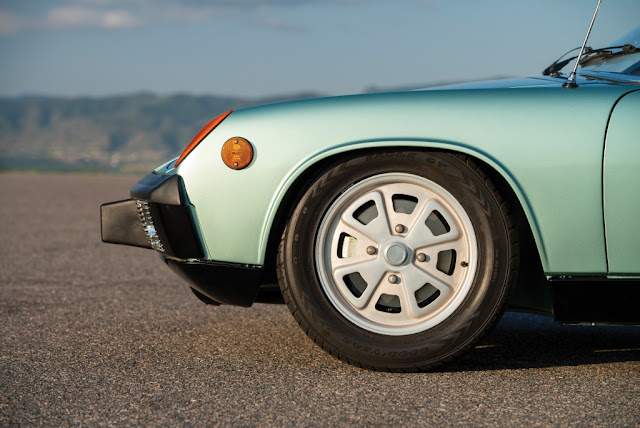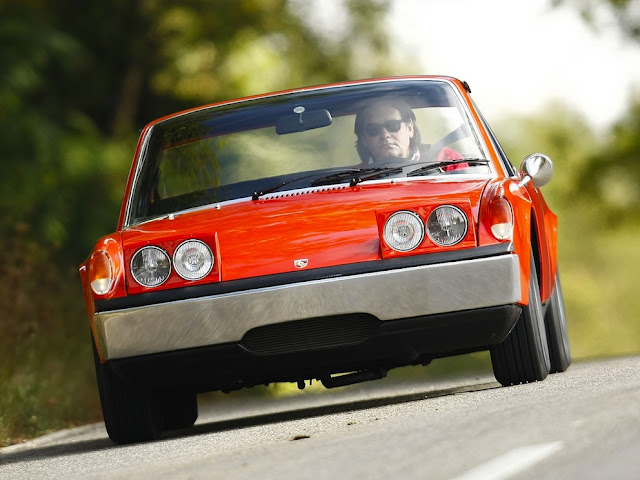A joint venture between Volkswagen and Porsche in 1969. The first mid-engined sports car built in Germany in series production. Two versions of the 914 were developed. The one with a flat four-cylinder engine (1.7, 1.8 or 2.0 L) was called 914, and with a flat six-cylinder engine, a 914/6. Both versions had headlights hidden in the hood and pop-up when needed. The targa top can be stored in the trunk. At the end, the two companies agreed to call the new car the “VW-Porsche” and to market this new model through a joint sales network. Karmann manufactured the rolling chassis at their plant, completing Volkswagen production in-house or delivering versions to Porsche for their final assembly. The four-cylinder VW-Porsche 914 became a genuine success in the market, 115,631 units were produced until the series ceased production in spring 1976, and thus becoming the best-selling sports car of its time. On the other hand, despite its outstanding performance, the six-cylinder 914/6 was hardly accepted by most of Porsche’s existing customers. Porsche discontinued the 914/6 variant in 1972 after producing only 3,351 units. Thus making it now one of the most sought-after collector cars from Porsche.







9 1 4 /6
only 3,351 units produced.

(Photos from boldride.com, road-scholars.com & seriouswheels.com)
9 1 4 /6 G T
In late 1969 Porsche assembled a GT package of high performance parts
that could be used on a 914/6 to turn the model into a race car.
Only 47 914/6-GT racing cars were assembled by the Porsche factory.
In 1970 Porsche entered a 914/6 GT in the gruelling 24 Hours of Le Mans race.
It finished 6th overall and won its class.

that could be used on a 914/6 to turn the model into a race car.
Only 47 914/6-GT racing cars were assembled by the Porsche factory.
In 1970 Porsche entered a 914/6 GT in the gruelling 24 Hours of Le Mans race.
It finished 6th overall and won its class.

9 1 4 /8 P R O T O T Y P E
Two prototype 914s, dubbed 914/8s, were built during 1969.
The orange 914/8 was the first constructed, at the instigation of Ferdinand Piëch
(then head of the Racing Dept). Powered by the full-blown,
310 hp (222 kW) 908 [flat-8] racing engine,
There are many differences from the standard vehicle, eg. the quad headlights.
Ferry Porsche with his VW-Porsche 914-8 (1969)
To help distinguish the 914/8 from other 914s can be on the oval air intake
(in the photo, under the number), it was necessary to cool the additional oil cooler.
(in the photo, under the number), it was necessary to cool the additional oil cooler.
9 1 6 P R O T O T Y P E
(Photos from autowp.ru & superwp.ru)




















































































































































